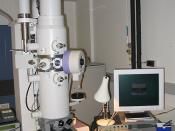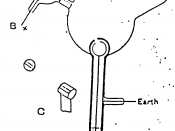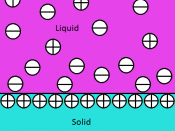In the 1890's scientist found that invisible rays are emitted when matter is hit with a jolt of electricity. Such experiments involved transmitting electric arcs between two ends of cathode ray tubes. Some physicists discovered some substances that spontaneously emitted invisible rays regardless of electricity or any other type of energy. An example of these substances are: uranium and radium, which are named radioactive materials. X-rays were a portion of the emitted rays that had the ability to penetrate dense objects. Beta rays were labeled as rays that displayed high levels of energy.
They had the ability to, when covered with a saucer-shaped cathode, heat a piece of aluminum until it turned red. Beta rays were described as being streams of particles bent in a magnetic field with a negative charge. These beta rays were proven to be minute in size and collectively only amounted to the mass of the smallest known atom.
They were all found to be identical despite their origin. Some scientists speculated as to their purpose in the universe. Some though them to be the fundamental building block of the universe. They name for these beta rays was soon replaced by the name electron.
The English physicist by the name of JJ Thomson, discovered the electron in 1897. He was certain that every atom consisted of electrons. He deduced that since an atom contains a neutral charge and consists of negative electrons, there must be some other positively charged material within the atom to balance out the negatively charged electrons. He realized that the electrons alone could not account for the mass of one atom due to their light weight. He deduced that this other material must account for most of the weight of the atom.
From these observations, JJ created a model that...


